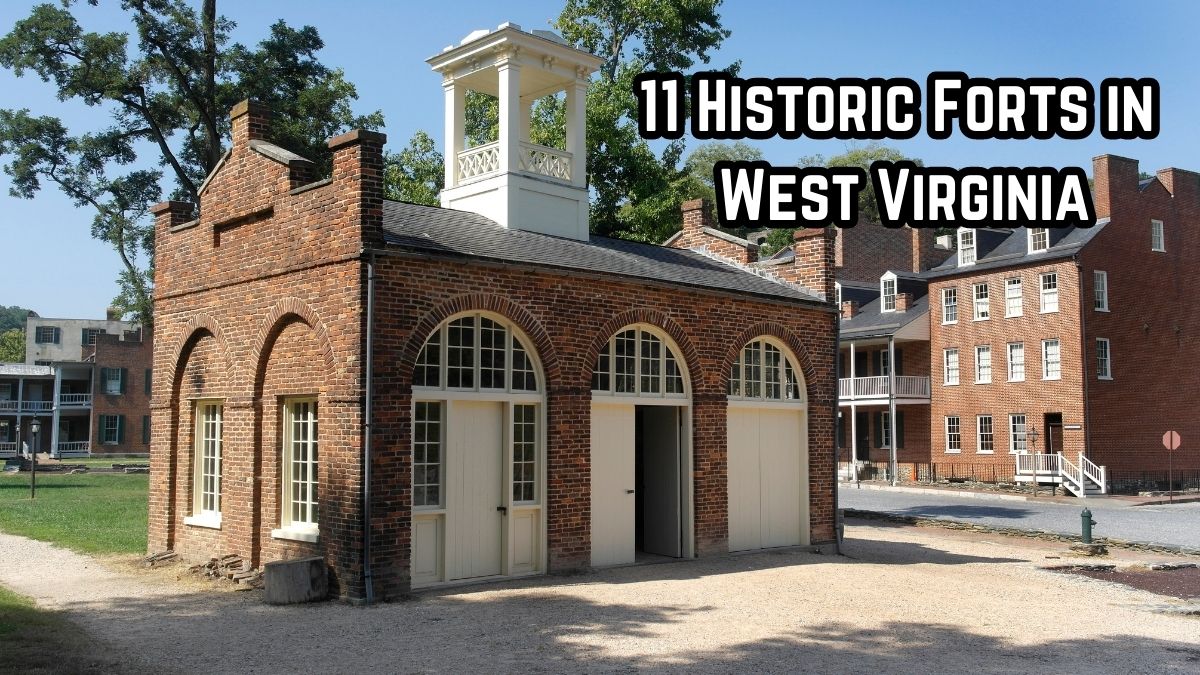West Virginia is a state steeped in American history, particularly during its frontier period. Establishing several forts across the region played a pivotal role in protecting settlers and the local militia against Native American attacks.
Throughout the Indian Wars and the Civil War, these forts served as refuges, military bases, and important strategic locations.
Many historic forts, built along the Ohio and Potomac Rivers and the Allegheny Mountains, are now recognized on the National Register of Historic Places.
This article on historic forts in West Virginia explores 11 essential forts and their history.
11 Historic Forts in West Virginia
| 1. Fort Ashby |
| 2. Fort Randolph |
| 3. Fort Savannah |
| 4. Arbuckle’s Fort |
| 5. Fort Blair |
| 6. Fort New Salem |
| 7. Fort Henry |
| 8. Fort Pleasant |
| 9. John Brown’s Fort |
| 10. Fort Morgantown |
| 11. Fort Edwards |
1. Fort Ashby
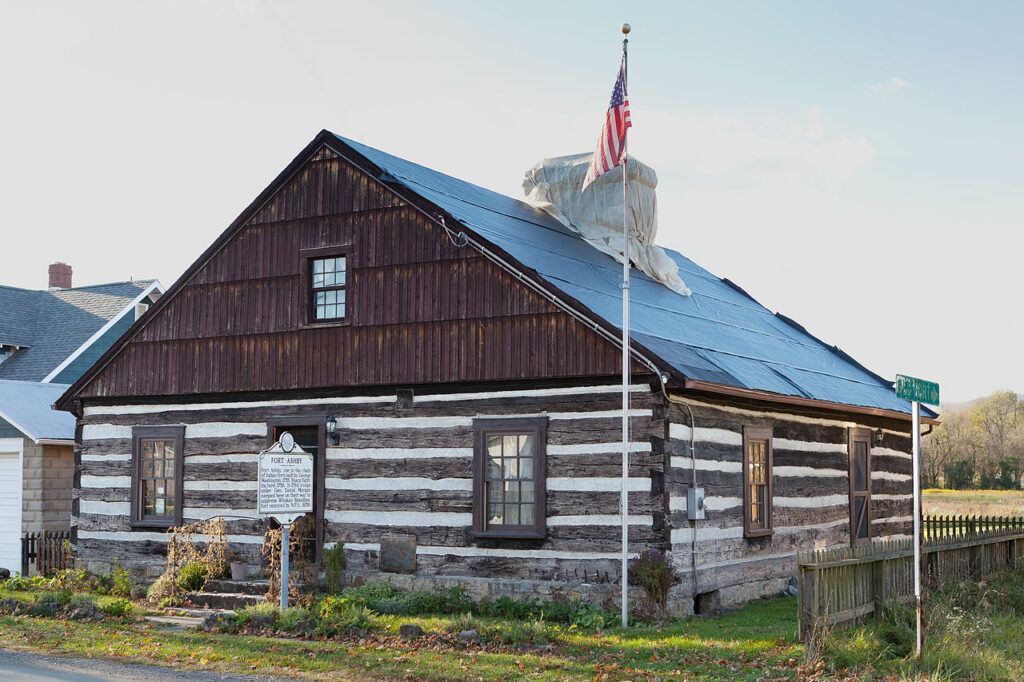
Fort Ashby was a military stronghold tucked away in Mineral County. It was built by a man named Captain John Ashby way back in 1755. The fort was part of a time when life was full of challenges and changes. We don’t know the exact spot where the original fort was built, but this adds to its air of mystery.
A sign that marks its history stands where the fort is believed to have once stood. It’s like a guide, pointing visitors toward this piece of history.
Who was Captain John Ashby?
Captain John Ashby is the man behind Fort Ashby. He played a big part in history, and his life was just as interesting as the fort.
What can you do at Fort Ashby?
A museum nearby lets you learn more about the fort and Captain Ashby. This museum is filled with life stories when the fort was built. There are also tales of survival from the time of Ashby and a glimpse into what everyday life was like in the 18th century.
A visit to Fort Ashby is a real adventure. Walking around, you can imagine what it was like back then. You might picture soldiers marching or hear the noise of weapons. You might even imagine hushed conversations about how to keep the fort safe. This is the magic of Fort Ashby. It’s a place that can take you back in time, teach you something new, and leave you with a sense of wonder.
2. Fort Randolph
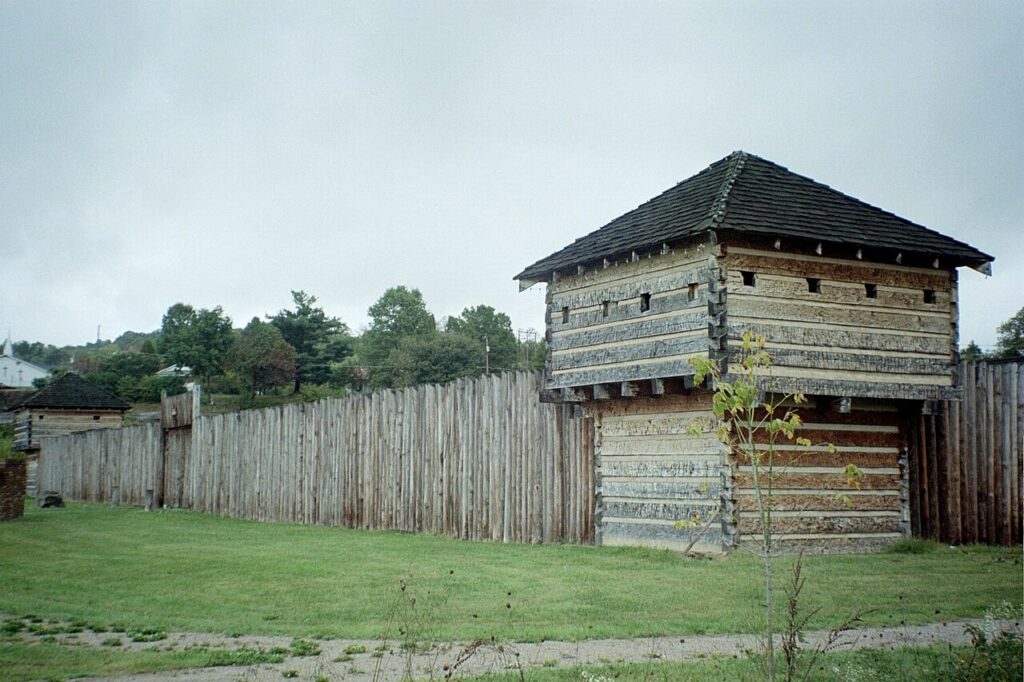
Set in the midst of the rich historical tapestry of West Virginia, Fort Randolph stands as a symbol of the region’s tumultuous past. Erected during the volatile times of the American Revolutionary War, this fort was crafted under the skilled hands of Captain Matthew Arbuckle and his men in 1776.
Fort Randolph’s Role in American History
During its existence, Fort Randolph served as a crucial protective shield against Native American raids, providing a strategic vantage point over the surrounding territories. It’s perhaps best known as the site where the famous Shawnee Chief Cornstalk was murdered in 1777, a tragic event that marked a critical turning point in the frontier wars.
Preserving the Legacy of Fort Randolph
Today, the original structure of Fort Randolph no longer exists, but its story lives on. The site where the fort once stood is now home to a reconstructed fort built to resemble the original, offering visitors a glimpse into the past. The fort, located in Point Pleasant, West Virginia, has been recreated to provide historical enthusiasts an authentic look at a frontier fort from the Revolutionary War era.
Near the fort, a visitor center hosts an array of exhibits showcasing the fort’s history, the broader conflicts of the era, and the life of Chief Cornstalk. Detailed information about the fort’s establishment, strategic importance, and the events surrounding Chief Cornstalk’s death help to paint a vivid picture of life on the American frontier.
Unfolding the Stories of Fort Randolph
Visiting Fort Randolph offers a unique opportunity to dive deep into the pages of American history. The tales associated with the fort — from the establishment to the strategic battles, to the tragic death of Chief Cornstalk — all contribute to the rich narrative of America’s past.
By exploring the site and its exhibits, you gain a broader understanding of the Revolutionary War era and the lives of those who lived through it. This unique journey helps to illuminate the struggles and triumphs that have shaped the nation’s history.
3. Fort Savannah
Fort Savannah, located in what is now the city of Lewisburg in West Virginia, is an intriguing relic from the pages of American history. Its origins can be traced back to the mid-18th century, when it served as a stronghold and a beacon of safety during turbulence and frontier conflicts.
Key Moments at Fort Savannah
One of the pivotal moments in Fort Savannah’s history occurred in 1774, during Lord Dunmore’s War. This conflict arose from escalating tensions between the Colony of Virginia and the Shawnee and Mingo American Indian nations. The fort was instrumental as a gathering point for the colonial militia, providing a strategic base of operations during this conflict.
The fort witnessed another significant event in 1782. During the American Revolutionary War, Fort Savannah was the setting of the Battle of Fort Donnally. This was a pivotal event wherein a combined force of American frontiersmen and their native allies successfully defended the fort against an attack by British-aligned American Indians.
A Visit to Fort Savannah Today
Fast forward to the present, and Fort Savannah invites visitors to immerse themselves in its storied past. While the original fortification no longer stands, a historical marker in Lewisburg commemorates the location and provides a brief overview of its historical significance.
There is also a museum close to the site, which houses an array of exhibits that offer insights into the fort’s history, the major conflicts it witnessed, and life on the American frontier during the 18th century. It provides an engaging, educational experience that brings the past alive.
Experiencing the Legacy of Fort Savannah
Visiting the site of Fort Savannah is an enriching journey back in time. Each tale related to this historic fort, from the complexities of Lord Dunmore’s War to the victory of the Battle of Fort Donnally, serves to illuminate a chapter of American history.
4. Arbuckle’s Fort
Arbuckle’s Fort, nestled in the beautiful landscape of what is now Greenbrier County, West Virginia, stands as a testament to the turbulent times of early frontier life. This fortified settlement, erected by Captain Matthew Arbuckle in 1774, acted as a bastion against Native American attacks during Lord Dunmore’s War, offering a place of refuge for settlers in the surrounding region.
Crucial Moments in Arbuckle’s Fort History
One of the key chapters in the fort’s history unfolded during Lord Dunmore’s War. This conflict in 1774 stemmed from escalating tensions between the Colony of Virginia and the Shawnee and Mingo nations. Arbuckle’s Fort, with its formidable log walls and strategic location overlooking the confluence of Muddy and Mill Creeks, played a vital role as a defensive stronghold and refuge during this period of unrest.
Arbuckle’s Fort also experienced action during the American Revolutionary War. In 1777, it successfully repelled an attack led by British loyalists and their Native American allies, a testament to its strategic design and the resilience of its occupants.
Experiencing Arbuckle’s Fort Today
Today, visitors to the 25-acre public preserve of Arbuckle’s Fort can better understand its historical significance and the life of its namesake, Captain Matthew Arbuckle. While the fort’s original structure no longer exists, archaeological work on the site has unearthed remnants of the fort and provided important insights into its design and use.
Unfolding the Legacy of Arbuckle’s Fort
A trip to Arbuckle’s Fort is a step back in time, providing a glimpse into the hardships and triumphs of frontier life. Each tale tied to this historic fort – from the hostilities of Lord Dunmore’s War to the conflicts of the American Revolutionary War – helps to shed light on a critical period in American history.
The opportunity to explore the site and the Arbuckle’s Fort Archeological Preserve offers a unique window into the fort’s instrumental role in shaping the region’s, and indeed the nation’s, past.
5. Fort Blair
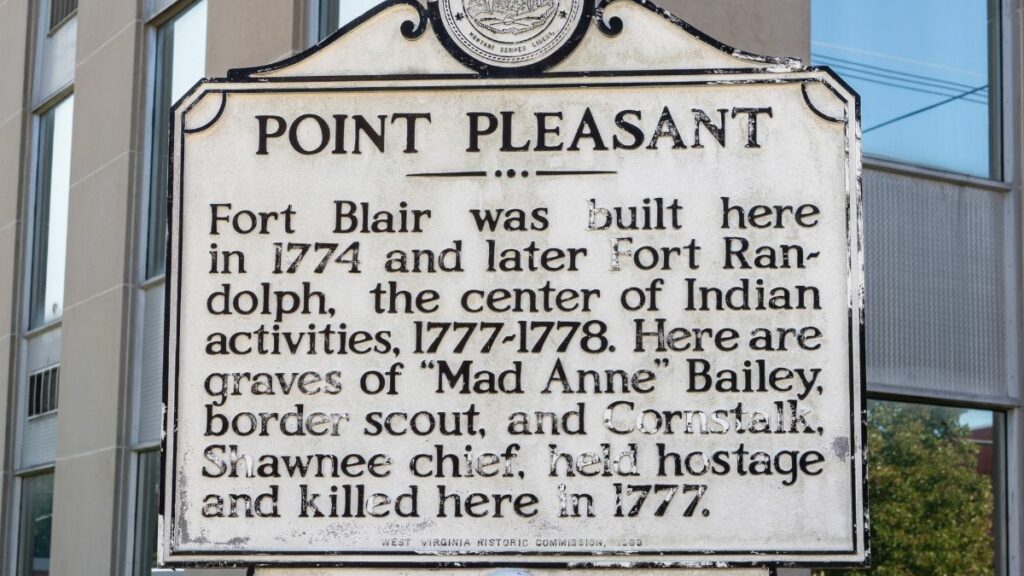
Fort Blaire, steeped in historical significance, rests in what is now the heartland of Virginia. Initially established in the late 18th century, this fortress bore witness to some of the most transformative times in forming early America.
Defining Moments at Fort Blaire
Fort Blaire became prominent during the American Revolutionary War, a revolutionary struggle from 1775 to 1783. This eight-year-long war for independence from British rule was a period of extensive political and military struggle, and Fort Blaire was a critical post during this tumultuous time.
As a military stronghold, Fort Blaire provided a strategic advantage for the American colonists. Its fortified walls and strategic location offered protection and served as an operational base against British forces. It became a beacon of resistance, illustrating the indomitable spirit of those striving for independence.
A Journey Through Time at Fort Blaire
Today, Fort Blaire stands as a monument to those turbulent times. While the original fortifications no longer exist, the site has been carefully preserved, and a historical marker provides a poignant reminder of its past. The inscription upon the marker invites visitors to reflect on the struggles and victories that unfolded within its boundaries.
Located near the site is a visitor center, which acts as a gateway to the fort’s history. It houses a wealth of exhibits that vividly depict Fort Blaire’s role during the American Revolutionary War, providing insights into military strategies, daily life in the fort, and the broader context of the revolutionary struggle.
Reliving the Legacy of Fort Blaire
A visit to Fort Blaire is akin to stepping back into history. It offers a unique opportunity to reflect upon the momentous events and the historical figures who played a role in them.
Each tale that emerges from this fortress — from intense battles to whispered revolution plans — helps illuminate a critical period in American history. Through exploration and learning at the site and the visitor center, you get to experience the indelible impact of Fort Blaire on America’s path to independence.
6. Fort New Salem
Immersed in the lush greenery of West Virginia’s landscapes, Fort New Salem is a tribute to the area’s rich history. Built-in the late 18th century, this fort wasn’t a military stronghold but a log cabin settlement that housed frontier pioneers.
Life in Fort New Salem
A typical frontier settlement, Fort New Salem was a community where life centered around agriculture, trade, and the pioneering spirit. The settlers who called this fort home were hardy individuals who braved the rugged terrain, unpredictable weather, and potential threats from wildlife and conflicts with Native Americans. Their resilience and tenacity were emblematic of the pioneering spirit of the era.
Preserving the Heritage of Fort New Salem
Today, Fort New Salem no longer stands as an active settlement, but its essence has been preserved in a reconstructed historic site of the same name. Located near Salem, West Virginia, the reconstructed Fort New Salem provides a glimpse into the lives of the late 18th and early 19th-century frontier pioneers.
Visitors can explore more than a dozen log buildings, each representing different aspects of frontier life, such as the blacksmith’s shop, the weaver’s cottage, and the schoolhouse. Period artifacts and demonstrations by costumed interpreters bring the fort’s history to life, creating an immersive, authentic experience of the pioneer era.
Experiencing the Frontier Life at Fort New Salem
A visit to Fort New Salem is like stepping back to the days of the American frontier. As you wander through the settlement’s log buildings and engage with the living history demonstrations, you can imagine the day-to-day struggles and triumphs of the settlers who made this place their home.
7. Fort Henry
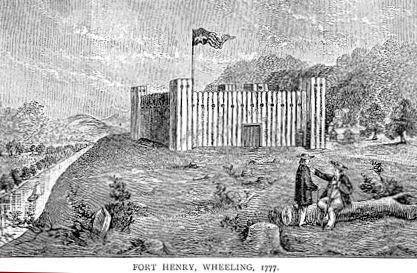
Situated along the breathtaking Ohio River, Fort Henry was constructed in 1774, a pivotal time in American history. This formidable fortification was designed to serve as a robust line of defense against Native American assaults during the Indian War and played its role to perfection.
Fort Henry in the Tides of War
Beyond the Indian War, Fort Henry also stood as a beacon of protection during the tumultuous years of the American Revolution. Its well-fortified structure and strategic location on the western Virginia frontier proved vital to American settlers’ struggle for independence.
Against all odds, the fort stood firm, successfully repelling multiple attacks and showcasing the unyielding resolve of its inhabitants. These battles etched Fort Henry’s name in the annals of American history and cemented its reputation as a key outpost during this pivotal period.
Experiencing Fort Henry Today
Fast forward to today, and Fort Henry is a monument to those challenging times. Recognizing its historical significance, it has been proudly listed on the National Register of Historic Places. While the original fortifications no longer exist, visitors can still walk the grounds where the fort once stood and imagine the events that unfolded there.
In the vicinity, a museum filled with informative and interactive exhibits allows visitors to learn more about the fort’s history. It showcases the fort’s vital role during the Indian War and the American Revolution and provides a snapshot of life on the western Virginia frontier during the late 18th century.
The Legacy of Fort Henry
A visit to Fort Henry is a journey through the pages of American history. Each story connected to this fort, from the hard-fought battles during the Indian War to the resilience shown during the American Revolution, helps to illuminate the fort’s essential role in shaping early America. By visiting the site and exploring the nearby museum, you can truly appreciate Fort Henry’s critical role in the birth of a nation.
8. Fort Pleasant
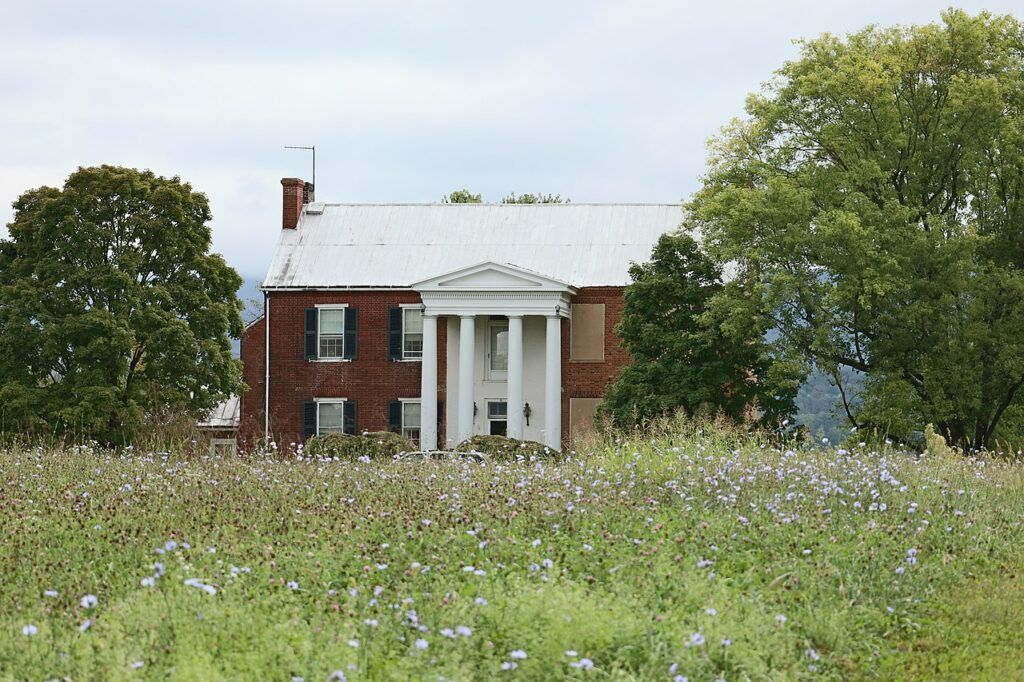
Fort Pleasant, erected in 1774 amidst the rugged beauty of Greenbrier County, West Virginia, stands as a testament to the courage and resilience of early American settlers. This fortified outpost, manned by Captain Mathew Arbuckle and his gallant company, was a crucial defensive stronghold during the Indian War, a turbulent period of conflict and change.
The Role of Fort Pleasant in the Indian War
During the throes of the Indian War, Fort Pleasant served as a bulwark against potential attacks from Native Americans. Positioned strategically in an area of constant threat, the fort, with its sturdy defenses, offered a haven of safety and security for the settlers in the surrounding region.
Under the capable leadership of Captain Arbuckle, the fort’s inhabitants put up a spirited defense, repelling hostile advances and providing much-needed stability on the unpredictable frontier.
Fort Pleasant Today
Although the original structure of Fort Pleasant has been lost to the sands of time, the site’s historical significance remains. A historical marker now graces the exact location where the fort once stood. It serves as a silent reminder of the fort’s history, allowing visitors to take a moment to contemplate the stories of bravery and survival that once unfolded there.
Reliving the Legacy of Fort Pleasant
A visit to the site of Fort Pleasant is akin to a journey through time. Each tale associated with this historic fort — from the valiant defense led by Captain Arbuckle to the fort’s critical role during the Indian War — helps to illuminate a crucial chapter in American history.
By visiting this historical marker, you can reflect on the fort’s enduring legacy and gain a greater appreciation for the struggles and triumphs that helped shape the nation’s destiny.
9. John Brown’s Fort
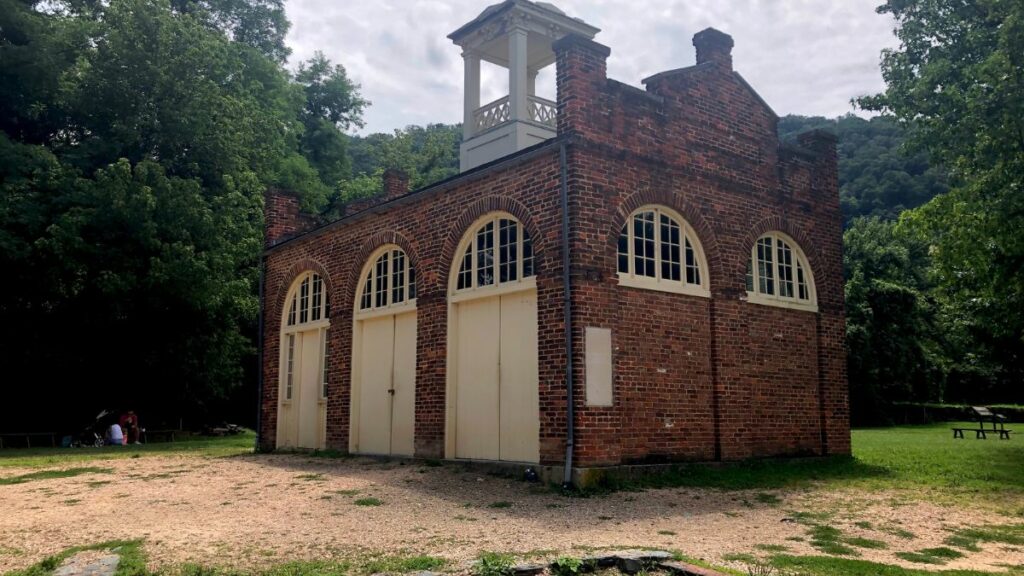
John Brown’s Fort holds an extraordinary place in the annals of American history. Named after the fervent abolitionist John Brown, the building wasn’t originally a fort but a fire engine and guardhouse in the federal armory at Harpers Ferry, West Virginia. It earned its historical significance as the site of Brown’s famous raid in 1859.
The Defining Moment: John Brown’s Raid
The armory at Harpers Ferry was chosen by Brown as the target for his raid, intending to seize its weapons and ignite a widespread slave rebellion. During the raid, he and his followers barricaded themselves in the engine house, which lasted two days before U.S. Marines led by Colonel Robert E. Lee stormed the building, ending the standoff.
Preserving John Brown’s Legacy
Today, John Brown’s Fort is a poignant reminder of the fight against slavery. The structure was moved several times before being returned to Harpers Ferry National Historical Park. The building, near its original location, now serves as an essential symbol of the pre-Civil War conflict over slavery.
Experiencing History at John Brown’s Fort
Visitors to John Brown’s Fort can walk through the doors of the historic building, following in the footsteps of one of America’s most controversial figures. Exhibits within the fort offer insights into John Brown’s life and the raid, helping to paint a vivid picture of the events leading up to the Civil War.
A visit to John Brown’s Fort presents a unique opportunity to delve into the heart of American history. From the fort’s crucial role in the raid to its status as an enduring symbol of the anti-slavery movement, every facet of its history contributes to a more comprehensive understanding of the tumultuous era that led to the Civil War.
Visitors can better appreciate the pivotal moments that shaped the nation by exploring the fort and its exhibits.
10. Fort Morgantown
Fort Morgantown, strategically located in the heart of West Virginia, is steeped in the history of early America.
This bastion of defense was constructed in the late 18th century when the American frontier was brimming with challenges and opportunities.
Fort Morgantown: A Bastion of Defense
Fort Morgantown was a vital stronghold during the frontier conflicts that marked the late 18th and early 19th centuries.
The fort’s formidable defenses and strategic positioning enabled it to fend off hostile forces, providing much-needed security to the settlers in the surrounding areas.
Through the Lenses of Time at Fort Morgantown
Today, while the original structures of Fort Morgantown no longer stand, its indelible imprint remains. The site’s historical significance is commemorated with a marker providing a snapshot of the fort’s past. It invites visitors to take a step back in time and imagine the events that unfolded within the fort’s now-vanished walls.
Near the historical marker, a visitor center is open to the public. It houses exhibits showcasing the fort’s crucial role during the frontier conflicts. The exhibits provide insights into military strategies of the era, the day-to-day life of the settlers, and the larger historical context in which Fort Morgantown existed.
Reliving the Legacy of Fort Morgantown
Visiting Fort Morgantown offers a unique opportunity to experience American history firsthand. Each tale associated with this historical fort — from its establishment to the conflicts it withstood — helps paint a vivid picture of the early American frontier. By exploring the site and the visitor center, you can better appreciate Fort Morgantown’s legacy and its crucial role in shaping America’s frontier history.
11. Fort Edwards
In the year 1756, a fort rose from the earth under the vigilant watch of Captain John Ashby and his dedicated team.
This structure was Fort Edwards, strategically placed in Hampshire County, near the coursing South Branch of the Potomac River.
It was conceived as a protective bulwark against Indian attacks during a tumultuous era marked by the French and Indian War.
Fort Edwards During the French and Indian War
Throughout the French and Indian War, Fort Edwards stood its ground, offering critical protection to the settlers in its vicinity.
Against recurring threats and heightened tension, the fort held steadfast under Captain Ashby’s leadership, serving as a refuge and symbol of resistance amidst the turmoil.
Fort Edwards in Today’s Era
Today, Fort Edwards is honored to be listed on the National Register of Historic Places, reflecting its historic importance and enduring legacy.
Although the original fort no longer stands, a historical marker denotes its location. It provides a concise history of the fort’s role during the French and Indian War.
In addition, a nearby visitor center hosts a wealth of information about the fort’s history.
Exhibits here provide insights into Captain Ashby’s leadership, the fort’s strategic importance, and the broader context of the French and Indian War, offering a comprehensive overview of this important historical period.
Experiencing the Legacy of Fort Edwards
Visiting Fort Edwards allows you to step back and immerse yourself in a significant chapter of American history.
Each tale associated with the fort — from its pivotal role during the French and Indian War to its place in Captain Ashby’s career — helps to paint a vivid picture of America’s past.
By exploring the site and the visitor center, you gain a richer understanding of the struggles and triumphs that shaped history and left an indelible imprint on the American narrative.
Related: Historic Forts in Washington State
Forts and West Virginia’s Early Conflicts
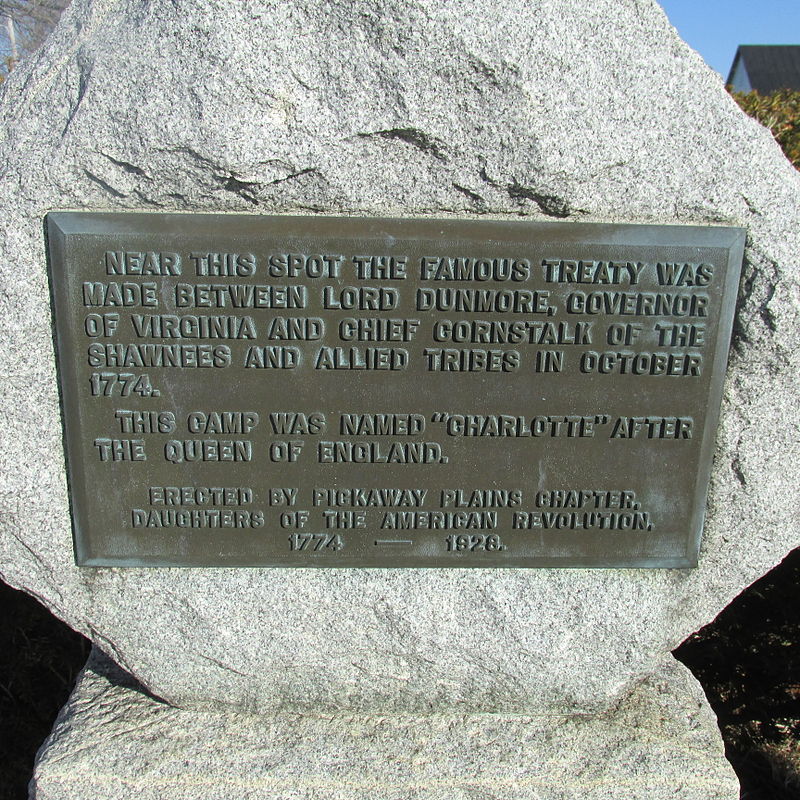
French and Indian War
The French and Indian War was a significant conflict in West Virginia’s history. It involved various forts, such as Fort Ashby and Fort Edwards, which were built to defend the western frontier from Indian attacks.
Strategically located near the Potomac River and the South Branch of the Potomac, these forts were added to the National Register of Historic Places, marking their importance in American history.
Fort Ashby, a small fort built by Captain John Ashby, was crucial in defending settlements against Native Americans.
Meanwhile, Fort Edwards, situated on the banks of the Potomac River, housed the company of men led by Colonel Washington during the conflict.
Dunmore’s War
Dunmore’s War, a conflict between Virginia militia and Native Americans, heavily involved West Virginia’s frontier forts. In Greenbrier County, Fort Savannah was constructed under the command of Captain William Russell.
Another key fortification established during this time was Arbuckle’s Fort, led by Captain Mathew Arbuckle in present-day Randolph County.
These forts were instrumental in protecting white settlers on the western frontier during the conflict, and as historical markers, they serve as important sites to study the impact of the region’s early conflicts on United States history.
Battle of Point Pleasant
The Battle of Point Pleasant, a critical engagement during Dunmore’s War, occurred near the Ohio and Kanawha Rivers and the Allegheny Mountains confluence. Fort Blair and Fort Pitt were vital strategic points during the battle as they supported the local militia.
Fort Blair, located in what is now Wood County, was established by Captain McKee on the east bank of Patterson Creek. Meanwhile, Fort Pitt was situated on the Monongahela River and served as the supply depot for the frontier forts during the conflict.
Today, the area around the battle site has become an important historical area. Prickett’s Fort State Park in Marion County includes a visitor center and a reconstructed small stockade fort built by Union forces during the conflict.
The park also offers special events, guided tours, and a gift shop, allowing visitors to learn more about these early conflicts and their significance in West Virginia’s rich history.
West Virginia Forts and the Civil War Period
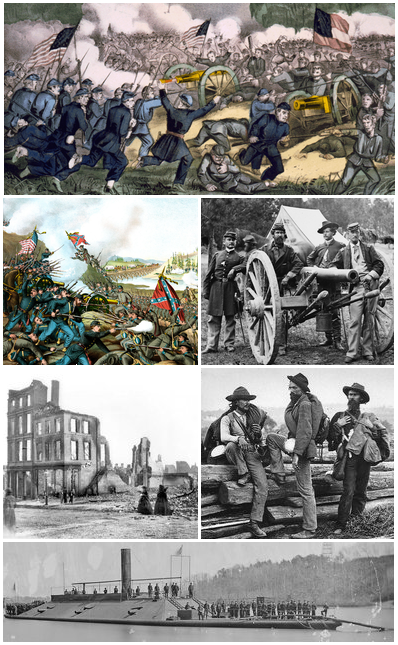
John Brown’s Trial
During the Civil War era in West Virginia, Harper’s Ferry became significant in American history. John Brown, an abolitionist, led a raid on the federal arsenal at Harper’s Ferry in 1859.
His actions and subsequent trial ignited the tensions leading to the Civil War between the Union and Confederate states.
The small fort in Harper’s Ferry, situated at the confluence of the Potomac River and Shenandoah Valley, played a crucial role in providing weapons and ammunition to Union forces.
Despite its size, the fort was an essential and strategic site during this volatile period in United States history.
Confederate Soldiers
In the early phase of the Civil War, Confederate soldiers sought to seize control of strategic locations throughout West Virginia. Fort Ashby, Fort Henry, and Fort Blair were essential defenses against the impending attacks.
These frontier forts were manned by local militia and regular Confederate forces, who fought to maintain control over critical territories along the Ohio River and access to the Allegheny Mountains.
| Fort | Location | Importance |
| Fort Ashby | Mineral County | Protected South Branch of the Potomac, on the National Register of Historic Places |
| Fort Henry | Wheeling | Guarded the main crossing point of the Ohio River |
| Fort Blair | Wood County | Defended the confluence of the Monongahela and Kanawha Rivers |
Throughout the Civil War, these forts withstood assaults from Union forces and were critical to the Confederate defense of the western Virginia frontier. The durability of the forts was due, in part, to the robust construction by local militia and stationed troops alike.
The employment of wooden walls and powder magazines in their design allowed for both strong fortifications and safe storage of weapons and ammunition.
Throughout this period of American history, many other small stockade forts and encampments were established for the protection of white settlers. These forts in West Virginia also sheltered Confederate soldiers when attacked, providing them shelter and supplies.
State and National Parks Featuring Forts
Harpers Ferry National Historical Park
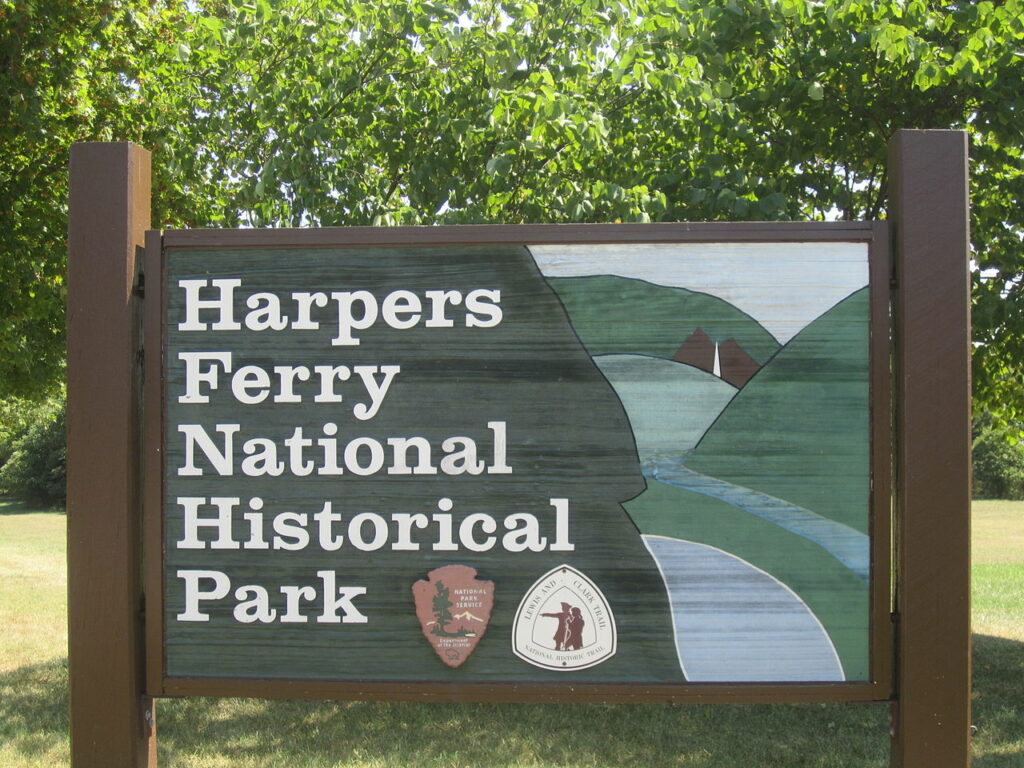
Harpers Ferry National Historical Park, located at the confluence of the Potomac and Shenandoah Rivers in West Virginia, preserves the heritage of the American Revolution and the Indian War.
The park features several historic forts, including Fort Loudoun and Fort Duquesne. Fort Loudoun, originally built during the French and Indian War, played a significant role in the American Revolution with its strong fortifications.
On the other hand, Fort Duquesne was built by Colonel George Washington as a response to the Native Americans’ attacks on white settlers along the western frontier.
Visitors to Harpers Ferry National Historical Park can explore these historic forts and learn about their role in shaping the United States early history.
The park provides guided tours, informative exhibits, and special events throughout the year, all aimed at showcasing the rich American history present in West Virginia.
Cass Scenic Railroad State Park

Cass Scenic Railroad State Park in Greenbrier County, West Virginia, offers a unique glimpse into the state’s logging and railroad history and highlights the frontier forts’ significance and role in the Indian wars.
The park is home to Fort Savannah, established by Captain William Russell and later occupied by Andrew Lewis during the French and Indian War.
| Fort | Date of Establishment | Captain |
| Fort Savannah | 1755 | Captain William Russell |
The small stockade fort, constructed on the east bank of Patterson Creek along the confluence of the Monongahela and Kanawha rivers, served as a prominent outpost for the local militia and played a key role in defending the western Virginia frontier.
The fort’s strategic location along the Allegheny Mountains made it a vital link in the chain of forts that stretched from the Ohio River to the Shenandoah Valley.
At Cass Scenic Railroad State Park, visitors can walk through the fort site, now marked with a historical marker, and get a feel for the frontier forts’ harsh conditions and the bravery shown by the company of men who defended them against large numbers of Native Americans.
Visiting the fort during autumn allows witnessing the beautiful foliage adding to the historic charm of the surroundings.
Related: 21 Historic Forts of Tennessee
Museums and Historic Districts
West Virginia boasts a rich history with several significant historic forts. This section will explore museums and historic districts that celebrate and document this fascinating past.
West Virginia State Museum
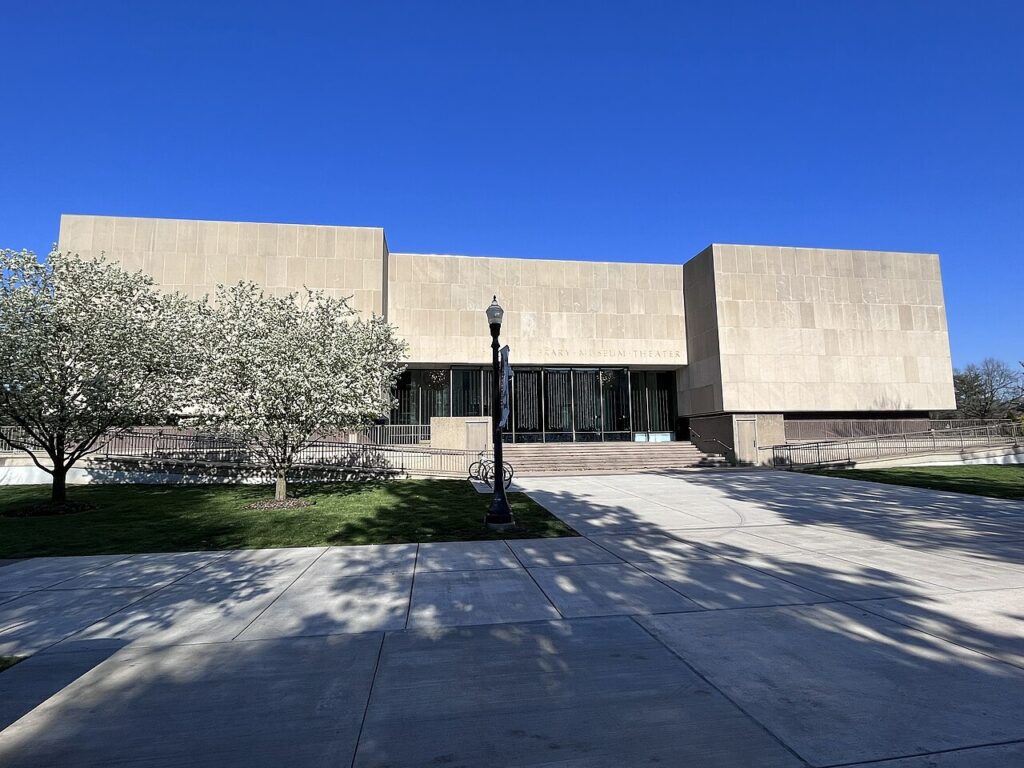
The West Virginia State Museum in Charleston offers visitors an immersive experience of the state’s history, from the Native Americans’ perspective to the American Revolution and beyond.
Exhibits showcase artifacts from pivotal battles, such as the Battle of Point Pleasant and Fort Henry, and information about historical figures like Colonel Washington and Captain John Ashby.
The museum also delves into life at the frontier forts, where local militias protected white settlers from Indian attacks and assisted the American war effort throughout the western frontier.
Matewan Historic District
Situated in the heart of Mingo County, the Matewan Historic District provides a glimpse into West Virginia’s tumultuous past. Matewan played a significant role in the Indian Wars, as the town lay near the Ohio and Monongahela Rivers, key strategic points during conflicts.
Today, visitors can stroll down Main Street and marvel at the well-preserved historic buildings, many listed on the National Register of Historic Places.
The district offers a unique window into life for those who lived and served in the chain of forts built during the American Revolution and Indian Wars.
Grave Creek Mound
History buffs in Moundsville, West Virginia, can appreciate the ancient Native American culture at the Grave Creek Mound Archaeological Complex. The mound on the east bank of Patterson Creek is one of the most enormous conical mounds in the United States.
It stands as a testament to the ingenuity and ambition of the early Native American inhabitants who once thrived in the area now known as West Virginia.
The onsite museum and visitor center provide interpretive displays and artifacts that help tell the story of these early people, offering valuable context to the region’s complex history.
The above-listed museums and historic districts provide a comprehensive picture of West Virginia’s rich history, encompassing the trials and tribulations of early settlers and local militias during the frontier period.
From the strategic forts along the rivers and mountains to the dynamic events shaping American history, these institutions preserve the memory and accurately depict the events that left an indelible mark on West Virginia and the United States.
Related: Historic Forts in Maine
West Virginia’s Frontier Legacy: Beyond the Famous Forts
Among the numerous historic sites of West Virginia, Monongalia County houses the Coon’s Fort. Nestled on the banks of Indian Creek, this small, robust fort was erected to safeguard the local militia and white settlers from Native American attacks during the Indian Wars.
The fort’s strategic position on the east side of Indian Creek, near the Monongahela River, bears witness to the pivotal role smaller forts played in fortifying the western frontier during those tense times.
A Trip Through Time in Brooke County
Brooke County, gracing the Ohio River, hosts several frontier forts that were eye-witnesses to defining events in American history. Among these, Fort Black holds special prominence. Established as a bulwark against Native American attacks, Fort Black’s strategic importance amplified during the Revolutionary War. The fort’s location near the Potomac River and the South Branch of the Potomac was critical for shielding local communities and militias.
Randolph County: Unearthing Brave Tales
In the heart of Randolph County lies an intriguing historical site – a burial mound near the location of Fort Spring. The mound is believed to hold the remains of brave men who succumbed to an Indian attack in 1757. The short-lived fort stands as a tribute to the courage and sacrifice of those who defended West Virginia’s frontier.
Revisiting the Civil War at Camp Union, Greenbrier County
Camp Union in Greenbrier County offers another glimpse into the past. This site functioned as a Union forces base during the Civil War, housing not just soldiers but also a hospital, prison, and burial ground. Echoes of this historic site can still be glimpsed in the remnants left behind.
Journeying Along the Kanawha and Monongahela Rivers
Visitors can trace the protective chain of forts along the Kanawha and Monongahela Rivers, which once shielded the western Virginia frontier. Fort Blair, Fort Pitt, and several forts along the Shenandoah Valley, now on the National Register of Historic Places, provide rich insight into West Virginia’s military past.
Frequently Asked Questions (FAQ)
What is the history of Fort Ashby?
Fort Ashby, located in Mineral County, West Virginia, played a significant role in the Indian Wars and is part of the chain of forts built during that time under the command of Colonel George Washington. Fort Ashby, known initially as Fort Sellers, was founded by Captain John Ashby in 1755. The fort’s location is marked by a historical marker, which lists it as a small fort on the National Register of Historic Places.
Who were the key figures in the establishment of Fort Lee?
Fort Lee, named after General Charles Lee, was located near the Ohio River in Wood County. Captain McKee was responsible for constructing the fort in 1774, which served as a defense against Native American attacks during the Indian War. Alongside Captain McKee, Colonel Joseph Beeler and the Virginia Assembly contributed to establishing Fort Lee, which was part of the larger system of frontier forts in West Virginia.
What role did Fort Ohio play in West Virginia’s history?
Fort Ohio, strategically placed near the mouth of Mill Creek in Hampshire County, was one of the first forts constructed in West Virginia to protect white settlers from Indian attacks during the Indian War. Erected in 1749, Fort Ohio’s establishment was led by Captain William Russell, with support from Lieutenant John Bacon and the Virginia Assembly. The fort was eventually replaced by Fort Ashby, which served as a stronger fort on the western Virginia frontier.
Can you provide a brief overview of Fort Seybert?
Fort Seybert, a small stockade fort in Greenbrier County, was built in 1758 during the Indian War. It was one of the frontier forts created to defend white settlers against Indian attacks in the Shenandoah Valley. Despite the valiant efforts of the local militia and residents, the fort was attacked and captured in 1758 by a large number of Native Americans, resulting in the deaths of many settlers and the eventual relocation of Fort Seybert’s survivors.
How did Fort Henry contribute to the development of West Virginia?
Fort Henry, previously known as Fort Fincastle, was constructed in 1774 in present-day Marshall County along the Ohio River. It played a crucial role in defending the western frontier during the Indian War and, later, the American Revolution. Fort Henry was the site of two significant Indian attacks, including one in 1777, which it could withstand, symbolizing resilience and perseverance for those living along the frontier.
What is the significance of Pricketts Fort in West Virginia?
Pricketts Fort, established in Marion County in 1774, was a principal link in the chain of forts defending the western frontier of West Virginia during the Indian War. Located near the junction of the Monongahela and Tygart Valley rivers, Pricketts Fort was built by Captain Jacob Prickett and offered a haven for white settlers from Native American attacks. Today, Pricketts Fort State Park commemorates this critical piece of American history, complete with a visitor center, gift shop, and special events for visitors to enjoy.

Cory is a website owner and content creator who enjoys fishing, history, coin collecting, and sports, among other hobbies. He is a husband and father of four.
Romans 15:4 For whatever was written in former days was written for our instruction, that through endurance and through the encouragement of the Scriptures we might have hope.

